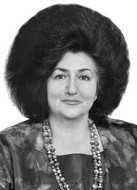Professional athletic performance efficiency versus metabolism controlling gene polymorphism and pharmacological support
Фотографии:
ˑ:
PhD G.V. Buznik1
Dr.Med. A.O. Pyatibrat2
Dr.Med., Professor P.V. Rodichkin3
Dr.Med., Professor P.D. Shabanov1, 4
1Institute of Experimental Medicine, St. Petersburg
2Nikiforov All-Russian Center of Emergency and Radiation Medicine (ARCERM, EMERCOM of Russia), St. Petersburg
3Herzen State Pedagogical University of Russia, St.Petersburg
4S.M. Kirov Military Medical Academy MO RF, St. Petersburg
The study was designed to analyze the bodily homeostasis in extreme situations versus the metabolism controlling gene polymorphism. The study data showed correlations of different gene alleles with adaptability to high physical loads. Subject to a pharmacological analysis under the study were the effects of Metaprot and Citoflavin on the athletes’ functionality rates under extreme physical loads. Metaprot was found to improve the adaptation mechanisms under extreme loads both in the biochemical and organs-specific levels, with significant savings in the performance rehabilitation time. Citoflavin was also tested to be of positive effect on the bodily adaptation mechanisms, particularly in rehabilitation periods; with the rehabilitative effects of Citoflavin found the most expressed in the athletes tested with different combinations of homozygote alleles associated with the lower aerobic productivity rates. The study data and analyses give grounds to conclude that the actual effects of pharmacological agents of nootropic action are largely determined by the anaerobic metabolism controlling gene polymorphism.
Keywords: molecular genetics, endurance, functional reserves, professional selection, extreme physical loads, adaptation, biochemical indicators, pharmacological support.
References
- Akhmetov I.I. Molekulyarnaya genetika sporta [Molecular genetics of sport]. Moscow: Sovetskiy sport publ., 2009, 268 p.
- Bobkov Yu.G., Vinogradov V.M., Katkov V.F. et al. Farmakologicheskaya korrektsiya utomleniya [Pharmacological Correction of Fatigue]. Moscow: Meditsina publ., 1984, 208 p.
- Golubev V.N., Gorelov A.A., Kuznetsov I.A., Nosov V.N. Podgotovka spetspodrazdeleniy k deystviyam v osobykh usloviyakh [Training of special forces for special environment operation]. St. Petersburg: RO MIA publ., 2001, 350 p.
- Lopatina A.B. Teoreticheskie aspekty izmeneniya biokhimicheskikh pokazateley krovi organizma sportsmenov kak pokazatel adaptatsionnykh protsessov [Theoretical aspects of changes in athletes' biochemical indicators as an indicator of adaptation processes]. Ped.-psikhol. i med.-biol. problem fiz. kultury i sporta, 2014, no. 2 (31), pp. 115–120.
- Oleinik S.A., Gorchakova N.A., Yakovleva I.Yu. et al Proizvodnye yantarnoy kisloty v sportivnoy farmakologii [Derivatives of succinic acid in sports pharmacology]. Psikhofarmakol. i biol. narkol., 2007, vol. 7, Spec.is., p. 2, P. 1880.
- Pitkevich E.S., Lositskiy E.A., Pitkevich Yu.E. Sravnitelnaya kharakteristika vliyaniya na fizicheskuyu rabotosposobnost aktoprotektorov: bemitila, tomerzola i meksidola [Comparative characteristics of the effect on physical performance of actoprotectors: boehmite, tomerzole and mexidol]. Tez. dokl. IX Ros. nats. kongr. 'Chelovek i lekarstvo' [Book of abstr. IX Rus. nat. congress. 'Man and medicine']. Moscow, 2002, pp. 351–352.
- Shabanov P.D., Zarubina I.V., Novikov V. E., Tsygan V.N. Metabolicheskie korrektory gipoksii [Metabolic correctors of hypoxia]. St. Petersburg: Inform-navigator publ., 2012, 982 p.
- Finck B.N., Bernal-Mizrachi C., Han D.H. et al. A potential link between muscle peroxisome proliferator-activated receptor-α signaling and obesity-related diabetes. Cell Metab., 2005, vol.1, pp.133–144.




 Журнал "THEORY AND PRACTICE
Журнал "THEORY AND PRACTICE